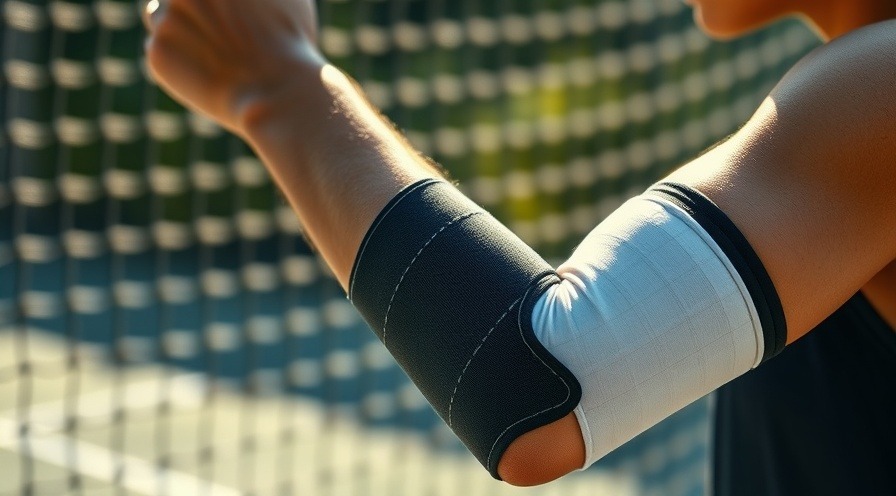
Understanding Tennis Elbow: What You Need to Know
Tennis elbow, medically known as lateral epicondylitis, is a common condition that affects not only athletes but anyone who engages in repetitive arm movements. At the heart of this issue is irritation or inflammation of the tendons that attach to the bony area on the outside of the elbow. This can result in pain and discomfort, making daily activities challenging. If you're feeling discomfort, it's helpful to understand how a tennis elbow brace can provide effective relief.
How Does a Tennis Elbow Brace Work to Support Recovery?
A tennis elbow brace offers targeted support to your forearm by applying consistent pressure around the elbow area. This pressure serves multiple purposes: it reduces strain on the tendons, stabilizes the joint, and helps alleviate pain. The design of the brace often includes a specialized pad that can help further reduce tension on the extensor carpi radialis brevis (ECRB) muscle, which is frequently involved in tennis elbow.
The Benefits of Using a Tennis Elbow Brace
When it comes to treating tennis elbow, a brace can be one of your best allies. Here are some key benefits:
Support: By stabilizing the elbow, the brace allows you to perform everyday activities like typing, cooking, or playing sports without aggravating the injury.
Pain Relief: The compression provided by the brace can lead to less pain and quicker recovery.
Injury Prevention: Wearing a brace can help prevent further injuries during activities that might otherwise strain the elbow.
Choosing the Right Tennis Elbow Brace
Selecting the correct brace is crucial for obtaining the best results. Look for these key features:
Circular Design: A wrap-around design with even compression helps distribute pressure across the forearm.
Adjustable Straps: Ensure a snug fit that adapts to your arm's shape for maximum comfort.
Comfort Materials: A brace made from breathable, comfortable fabric will encourage you to wear it consistently.
Practical Insights to Enhance Your Healing Journey
To maximize the effectiveness of your tennis elbow brace, consider these additional insights:
Modify Activities: Try to limit activities that exacerbate the strain on your elbow. This could involve taking breaks or modifying how tasks are done.
Use During Risky Activities: Wearing a brace during high-risk activities such as lifting weights or playing tennis can help safeguard your elbow from further injury.
Consult a Professional: If pain persists, seek advice from a healthcare professional for personalized treatment options.

Connecting Emotionally with the Journey
Experiencing tennis elbow can be frustrating, limiting your ability to enjoy everyday activities and hobbies. It's essential to understand that you're not alone. Many individuals face this challenge, and with the right approach and tools—like a tennis elbow brace—you can take control of your recovery journey. Remember, patience and persistence are vital in the healing process.
Frequently Asked Questions About Tennis Elbow Braces
To further assist those dealing with tennis elbow, let’s address some commonly asked questions:
Can I remove the brace at night? Yes, it's often recommended to remove it while sleeping for comfort, unless otherwise advised by a healthcare provider.
How long do I need to wear the brace? The duration varies based on your injury's severity. Typically, it's recommended to wear it during activities that may aggravate the condition.
The Road to Recovery Starts Here
Using a tennis elbow brace is a simple yet effective step towards alleviating symptoms. By understanding how it works and recognizing its benefits, you are empowered to make informed decisions about your health. Explore additional resources and tools to enhance your recovery and get back to the activities you love!
Extra Resources
3 Additional Sources Covering Tennis Elbow and Related Conditions:
"Overcoming Tendonitis" by Paul Ingraham:
This book provides a detailed look at tendon pain, including lateral epicondylitis. It covers the science behind tendon injuries, treatment options (including bracing), and rehabilitation exercises. It's known for its evidence-based approach.
American Academy of Orthopaedic Surgeons (AAOS):
The AAOS website offers patient education resources on various orthopedic conditions, including tennis elbow. You can find information on diagnosis, treatment, and rehabilitation.
National Institute of Arthritis and Musculoskeletal and Skin Diseases (NIAMS):
NIAMS provides information on musculoskeletal conditions, including tendon injuries. Their website may have resources on tennis elbow and its management.
 Add Row
Add Row  Add
Add 




 Add Row
Add Row  Add
Add 

Write A Comment